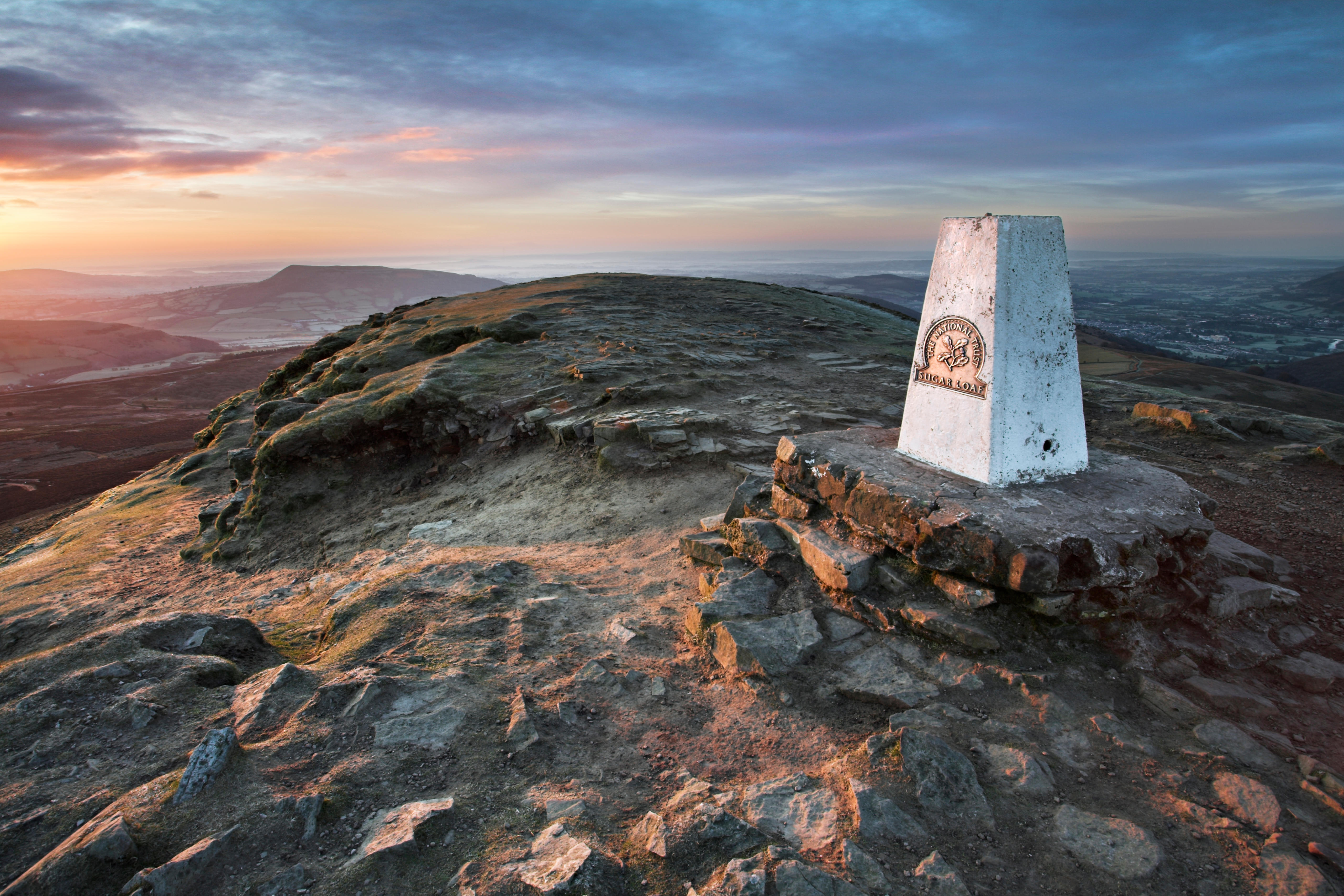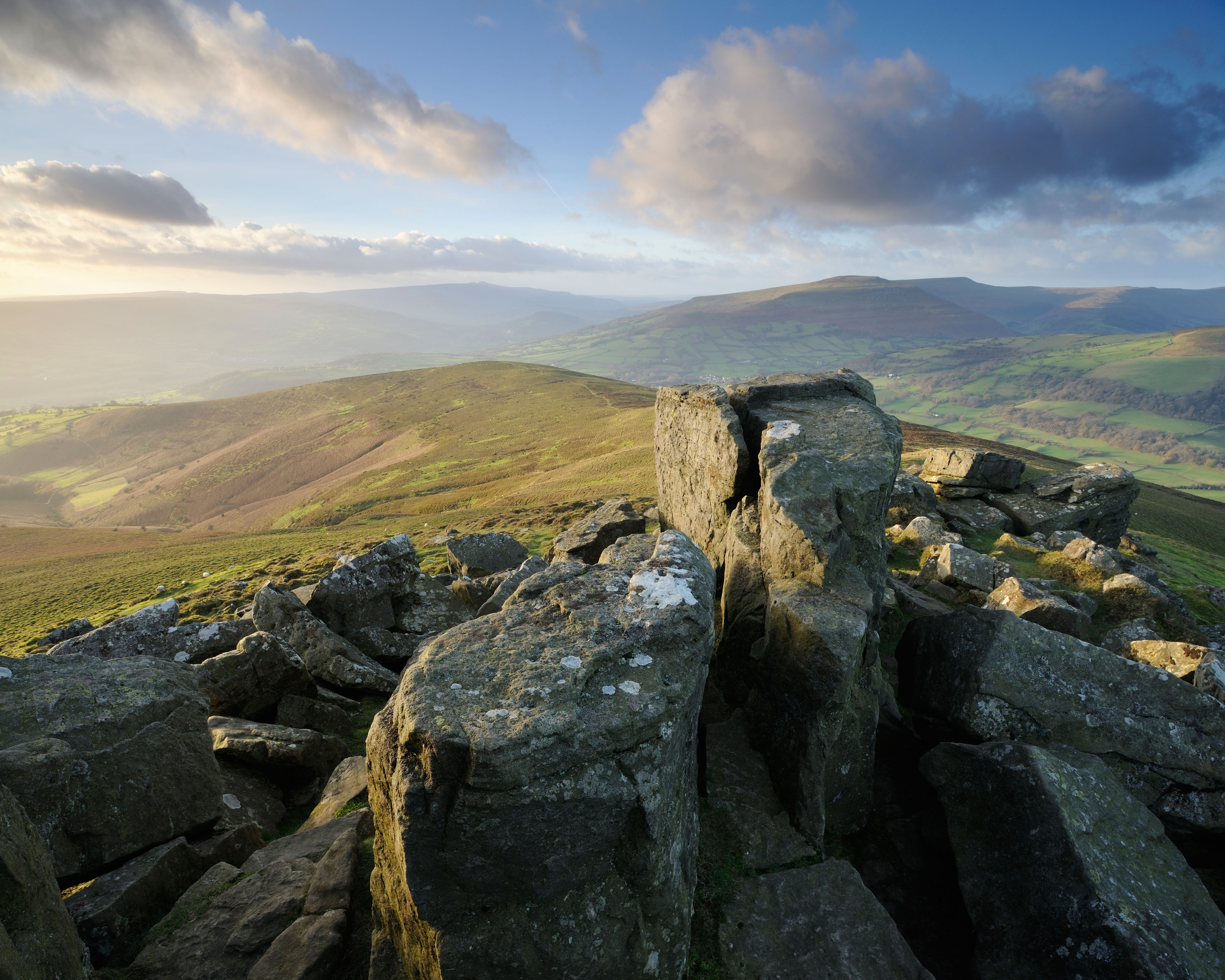Climbing the Sugar Loaf, the irresistibly perfect mountain in a ‘wild and lovely’ setting
The Sugar Loaf in Wales’s Black Mountains is a satisfying little peak to conquer, as Fiona Reynolds explains.


There’s a little mountain to the north-west of Abergavenny that, from the right vantage point and in the right weather, presents as a perfect cone. The Sugar Loaf is irresistible to anyone who loves the Welsh hills.
This is wild and lovely country. I first fell in love with it reading Bruce Chatwin’s
On the Black Hill, a macabrely enchanting story of twin brothers captured in their moment of space and time, set in a gritty yet magical Golden Valley. Visiting a friend near Brecon enabled me to walk often in these glorious hills, as did my epic tramp along Offa’s Dyke a decade ago.
I’d also visited when at the National Trust, which owns and looks after the mountain, but what reminded me of its beauty was Anna Pavord’s charming book Landskipping. She grew up there and writes of her childhood forays up the Sugar Loaf, how it shaped her love of and susceptibility to landscape and how that shaped not only her life, but those of so many others – including me.
'Thanks to the injustice of the weather, what should we see but the top emerging cheekily from the clouds just as we reached the bottom'
We love landscapes for many reasons – familiarity is one. Knowing how the hills fold and the streams run and the pockets where wildflowers are found give us a special affection for a place. Discovery is exciting, but it’s familiarity that tugs at our hearts more profoundly. It’s why I never tire of doing the same walk or revisiting the same landscape. We learn something new and are locked into a deeper connection each time.
We climbed the Sugar Loaf in the depths of January, on an unseasonably warm, but cloudy day. We parked in a tiny car park near Porth-y-Parc, at the end of a no-through road above Abergavenny. From there, an old lane, bounded by gnarled trees, takes you to a col. Then, it’s a short, but steep pull to the top, this satisfying little mountain conquered easily in less than an hour.
Approaching the peak, we were suddenly engulfed in cloud and what felt like crowds of people, although we’d climbed in apparent isolation. The top is a long, steep-sided ridge and, despite the lack of views, we felt the thrill of a summit and were hungry for more.
Sign up for the Country Life Newsletter
Exquisite houses, the beauty of Nature, and how to get the most from your life, straight to your inbox.

Instead of retracing our steps, we walked off to the far end and picked up a long path running west before it descends into the valley above Cwmcegyr. And, thanks to the injustice of the weather, what should we see but the top emerging cheekily from the clouds just as we reached the bottom!
With shafts of thin sunlight to encourage us, we climbed uphill again to join the ancient ridge route of Mynydd Llanwenarth, which runs south-east. Reaching its end, we realised we were still a valley and a big ridge from our starting point, but we found a path that took us into St Mary’s Vale and around the Rholben ridge before, with a bit of a hop, a skip and a jump, we reached the car.
St Mary’s Vale was a delight: a deep valley thick with beech and rich in history, quiet apart from the bubbling stream we crossed on big, wobbly tree trunks. The remains of charcoal-burning platforms recalled the commoning traditions of this part of Wales, the scrapes in the ground being the source of stone to build local houses.
I love quirky landscapes that are not curated, but raw, showing their workings and stories in glimmers and remnants. As Raymond Williams wrote so beautifully of the Black Mountains: ‘With this stone and this grass, with this red earth, this place was received and made and remade. Its generations are distinct but all, suddenly, present.’
Fiona Reynolds is Master of Emmanuel College, Cambridge, and the author of ‘The Fight for Beauty’ – twitter.com/fionacreynolds
Fiona Reynolds is chair of the Food, Farming and Countryside Commission, the former director-general of the National Trust, former Master of Emmanuel College, Cambridge, and the author of The Fight for Beauty. Follow her on Twitter @fionacreynolds.
-
 Jungle temples, pet snakes and the most expensive car in the world: Country Life Quiz of the Day, April 14, 2025
Jungle temples, pet snakes and the most expensive car in the world: Country Life Quiz of the Day, April 14, 2025Mondays's quiz tests your knowledge on English kings, astronomy and fashion.
By James Fisher Published
-
 Welcome to the modern party barn, where disco balls are 'non-negotiable'
Welcome to the modern party barn, where disco balls are 'non-negotiable'A party barn is the ultimate good-time utopia, devoid of the toil of a home gym or the practicalities of a home office. Modern efforts are a world away from the draughty, hay-bales-and-a-hi-fi set-up of yesteryear.
By Annabel Dixon Published